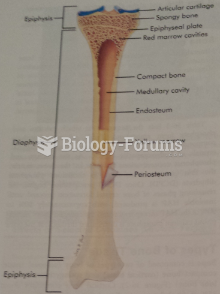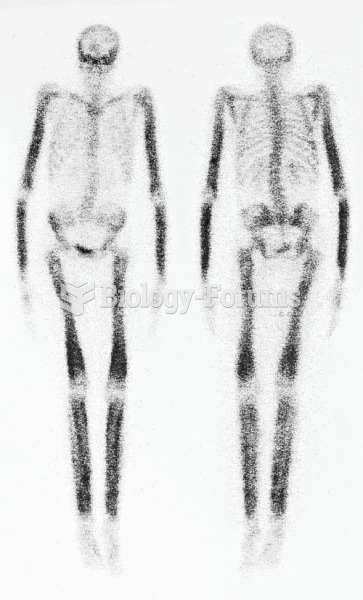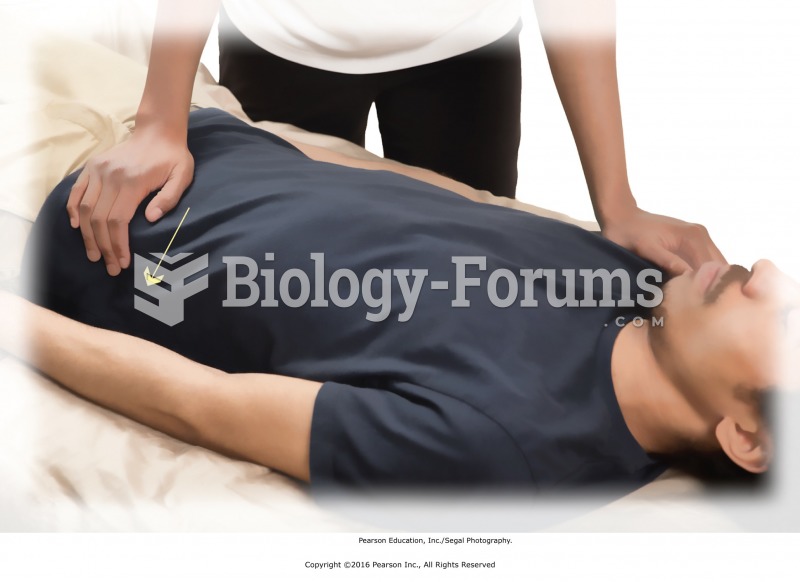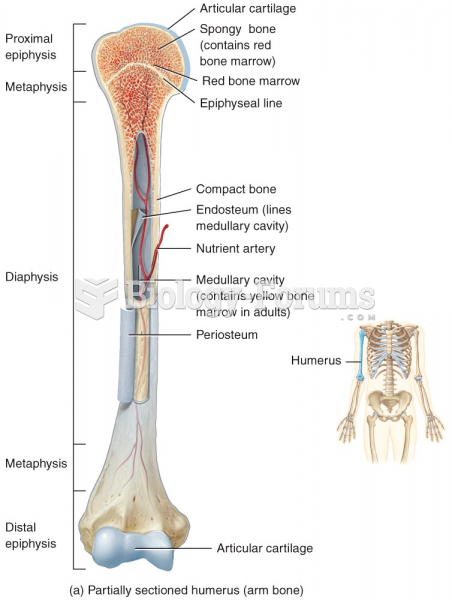|
|
|
Aspirin is the most widely used drug in the world. It has even been recognized as such by the Guinness Book of World Records.
GI conditions that will keep you out of the U.S. armed services include ulcers, varices, fistulas, esophagitis, gastritis, congenital abnormalities, inflammatory bowel disease, enteritis, colitis, proctitis, duodenal diverticula, malabsorption syndromes, hepatitis, cirrhosis, cysts, abscesses, pancreatitis, polyps, certain hemorrhoids, splenomegaly, hernias, recent abdominal surgery, GI bypass or stomach stapling, and artificial GI openings.
By definition, when a medication is administered intravenously, its bioavailability is 100%.
Less than one of every three adults with high LDL cholesterol has the condition under control. Only 48.1% with the condition are being treated for it.
The first documented use of surgical anesthesia in the United States was in Connecticut in 1844.
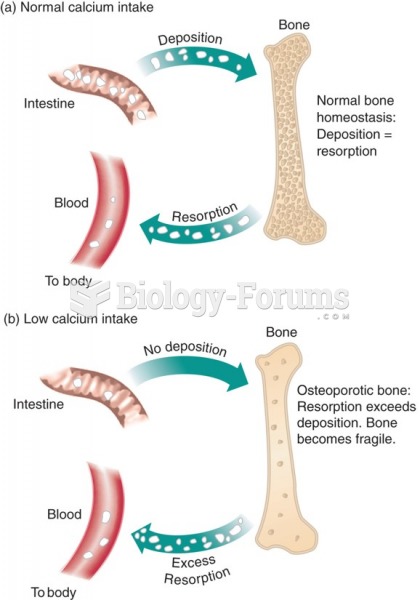 Calcium metabolism in osteoporosis: (a) bone deposition equals bone resorption; (b) bone resorption ...
Calcium metabolism in osteoporosis: (a) bone deposition equals bone resorption; (b) bone resorption ...
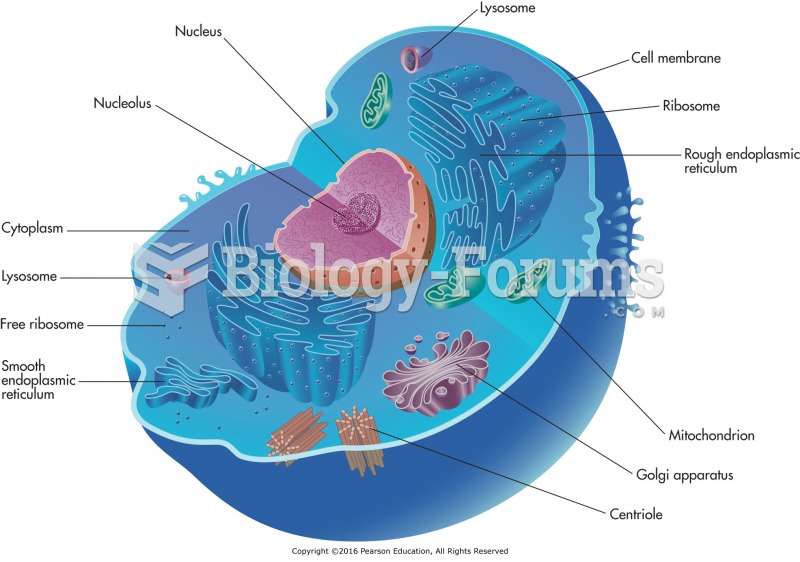 The cell membrane, cytoplasm, nucleus, nucleolus, ribosomes, centrioles, mitochondria, endoplasmic ...
The cell membrane, cytoplasm, nucleus, nucleolus, ribosomes, centrioles, mitochondria, endoplasmic ...


